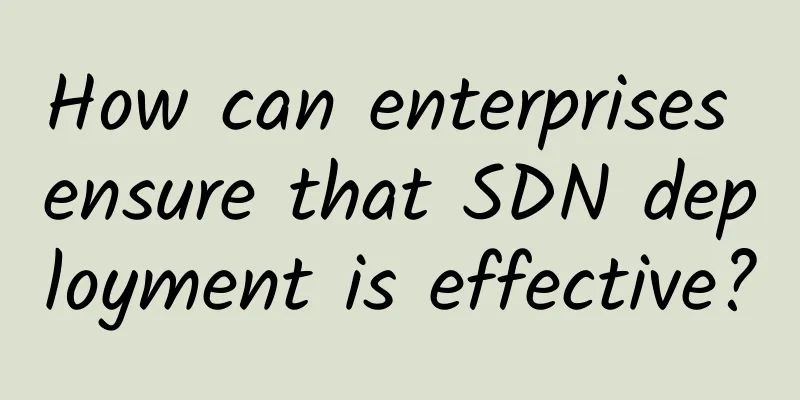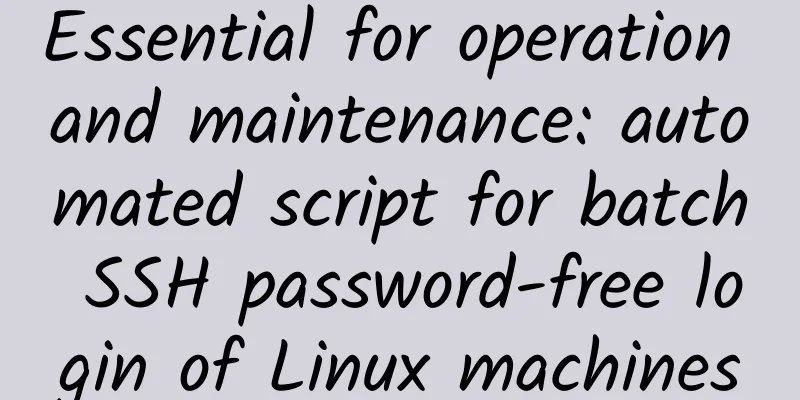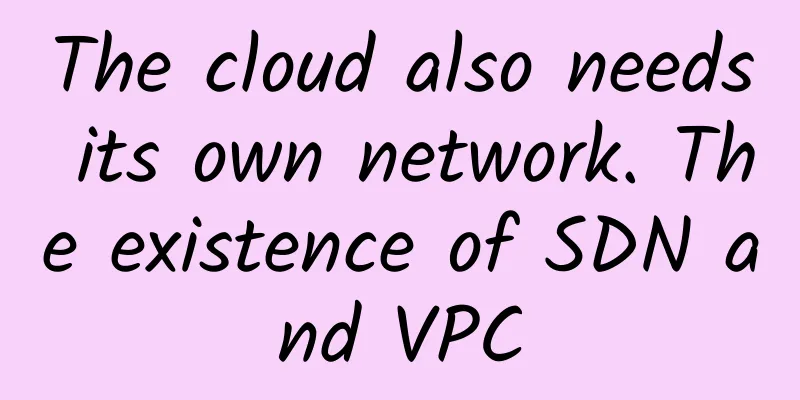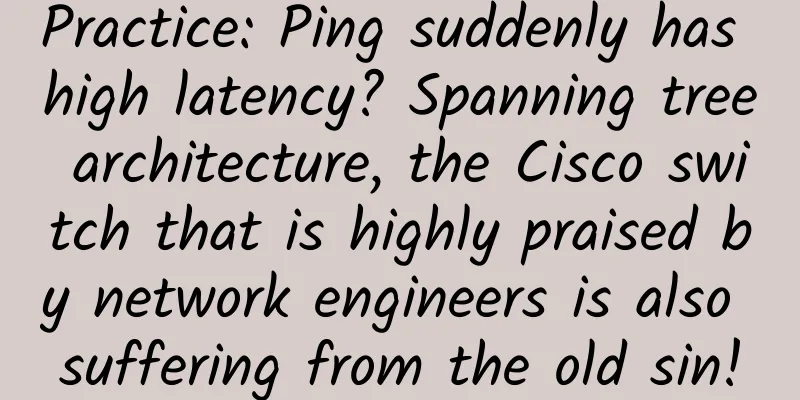Understanding HTTP/1, HTTP/2, and HTTP/3 in one article

|
1. HTTP1.1 and HTTP2 1. HTTP1.1 flaws
2. Head-of-line blocking Head-of-line blocking means that when a request in a sequence of sequentially sent requests is blocked for some reason, all requests queued behind it are also blocked, causing the client to delay receiving data. For head-of-line blocking:
3. Stateless Features Stateless means that the protocol has no memory of the connection status. Pure HTTP does not have mechanisms such as cookies, and each connection is a new connection. The last request verified the username and password, but the server does not know how the next request is related to the previous request. In other words, the login state is lost. 4. Insecurity The transmitted content is not encrypted and may be tampered with or hijacked in transit. 5. SPDY Protocol SPDY is an improved version of HTTP1.1 promoted by Google (there was no HTTP2 at that time). characteristic:
6. Multiplexing SPDY allows unlimited concurrent streams on a single connection. Because requests are on a single channel, TCP is more efficient (see Slow Start in TCP Congestion Control https://zhuanlan.zhihu.com/p/37379780). Fewer network connections send more intensive packets. 7. Header Compression Using the specialized HPACK algorithm, only the difference header is sent for each request and response, which can generally achieve a high compression rate of 50% to 90%. 8. Request Priority Although unlimited concurrent streams solve the problem of head-of-line blocking, if bandwidth is limited, the client may block requests to prevent blocking the channel. When the network channel is blocked by non-critical resources, high-priority requests will be processed first. 9. Server Push Server Push allows the server to actively push resource files to the client. Of course, the client also has the right to choose whether to receive it. 10. Improved security Supports HTTPS for encrypted transmission. HTTP2 HTTP2 is based on SPDY and focuses on performance. One of its biggest goals is to use only one connection between the user and the website. New features:
1. Binary framing First, HTTP2 does not change the semantics of HTTP1, but uses binary framing for transmission at the application layer. Therefore, new communication units are introduced: frames, messages, and streams. What are the benefits of framing? The server receives more requests per unit time, which can increase the number of concurrent requests. Most importantly, it provides underlying support for multiplexing. 2. Multiplexing A domain name corresponds to a connection, and a stream represents a complete request-response process. A frame is the smallest unit of data. Each frame identifies which stream it belongs to. A stream is a data stream composed of multiple frames. Multiplexing means that multiple streams can exist in a TCP connection. Demonstration 3. HTTP2 flaws
1. Connection establishment delay The TCP connection requires a three-way handshake with the server, which means that data transmission can only be carried out after consuming 1.5 RTTs. There are two versions of TLS connections - TLS1.2 and TLS1.3. Each version takes a different amount of time to establish a connection, roughly 1 to 2 RTTs. RTT (Round-Trip Time): Round-trip delay. It refers to the total delay from the start of sending data to the sender receiving confirmation from the receiver (the receiver sends confirmation immediately after receiving the data). 2. Head-of-line blocking has not been completely resolved In order to ensure reliable transmission, TCP has a "timeout retransmission" mechanism, and lost packets must wait for retransmission confirmation. When HTTP2 loses packets, the entire TCP must wait for retransmission, which will block all requests in the TCP connection. RTO: The full name of the English name is Retransmission TimeOut, which is the retransmission timeout. RTO is a dynamic value that changes according to changes in the network. RTO is calculated based on the round-trip time RTT of a given connection. The ack returned by the receiver is the sequence number of the next group of packets that it hopes to receive. 3. Multiplexing causes increased server pressure Multiplexing does not limit the number of simultaneous requests. The average number of requests is the same as usual, but there will be short bursts of many requests, resulting in a sudden increase in QPS. 4. Multiplexing is prone to timeout A large number of requests are sent at the same time. Since there are multiple parallel streams in the HTTP2 connection, and the network bandwidth and server resources are limited, the resources of each stream will be diluted. Although their start times are shorter, they may all time out. Even with a load balancer like Nginx, throttling can be tricky to do correctly. Second, even if you introduce or adjust queuing mechanisms to your application, there are only so many connections that can be processed at a time. If you queue requests, also be careful to drop requests after the response times out to avoid wasting unnecessary resources. (Quote: https://www.lucidchart.com/techblog/2019/04/10/why-turning-on-http2-was-a-mistake/) QUIC 1. Introduction Google was aware of these problems when it was promoting SPDY, so it started from scratch and developed a QUIC protocol based on the UDP protocol. This is HTTP3. It truly "perfectly" solves the "head of line blocking" problem. 2. Main features
3. Improved congestion control and reliable transmission From the perspective of congestion algorithm and reliable transmission itself, QUIC is just a re-implementation of the TCP protocol. So what are the improvements of the QUIC protocol? The main points are as follows: (1) Pluggable - Different congestion control algorithms can be implemented at the application level. Different connections of an application can also support different congestion control configurations. The application can change the congestion control without downtime and upgrades, and different congestion control algorithms can be used for different services, different network standards, and even different RTTs. Regarding the pluggable congestion control simulation at the application layer, you can experiment with streams on sockets. (2) Monotonically increasing Packet Number - Packet Number is used instead of TCP's seq. Each Packet Number is strictly increasing, that is, even if Packet N is lost, the Packet Number of the retransmitted Packet N is no longer N, but a value greater than N. However, the TCP retransmission strategy is ambiguous. For example, a client sends a request and initiates a retransmission after an RTO, but in fact the server has received the first request and the response is on the way. When the client receives the response, the RTT obtained will be smaller than the actual RTT. When Packet N is unique, the correct RTT can be calculated. (3) Reneging is not allowed - once a packet is Acked, it is assumed to have been received correctly. Reneging means that the receiver has the right to discard the data in the SACK (Selective Acknowledgment) that has been reported to the sender (for example, discarding out-of-order packets due to insufficient receiving window). The ACK in QUIC contains information equivalent to the SACK in TCP, but QUIC does not allow any data packets (including those that have been confirmed to be accepted) to be discarded. This not only simplifies the implementation difficulty of the sender and receiver, but also reduces the memory pressure on the sender. (4) Forward Error Correction (FEC) Early versions of QUIC had a packet loss recovery mechanism, but it was later abandoned due to increased bandwidth consumption and mediocre results. In FEC, the data of the QUIC data frame is mixed with original data and redundant data to ensure that no matter what the content of the n transmissions that reach the receiving end is, the receiving end can recover all n original data packets. The essence of FEC is XOR. Schematic diagram: (5) More Ack blocks and increased Ack Delay time. QUIC can provide 256 Ack Blocks at the same time, so QUIC is more flexible than TCP (using SACK) in reordering, which also allows QUIC to retain more in-transit bytes on the network when reordering or loss occurs (https://blog.csdn.net/u014023993/article/details/85299434). In networks with high packet loss rates, it can improve network recovery speed and reduce retransmissions. There is a problem with TCP's Timestamp option: the sender sets the sending timestamp when sending a message, and the receiver copies the timestamp field value to the confirmation message timestamp when confirming the message segment, but does not calculate the time from the receiver receiving the packet to sending the Ack. This time can be referred to as Ack Delay, which will cause RTT calculation errors. Now this thing is added into the calculation of RTT. (6) Flow control based on stream and connection levels. Why do we need two types of flow control? Mainly because QUIC supports multiplexing. A Stream can be considered as an HTTP request. A Connection can be compared to a TCP connection. Multiplexing means that multiple Streams can exist on a Connection at the same time. A QUIC receiver advertises the absolute byte offset of the maximum data it is willing to receive on each stream. As data is sent, received, and delivered on a particular stream, the receiver sends WINDOW_UPDATE frames that increase the advertised offset limit for that stream, allowing the peer to send more data on that stream. In addition to per-stream flow control, QUIC also implements connection-level flow control to limit the total buffer a QUIC receiver is willing to allocate for a connection. Connection flow control works just like stream flow control, but the bytes transferred and maximum receive offset are summed across all streams. Most importantly, we can limit the transmission rate and ensure service availability through flow control when there is insufficient memory or problems with upstream processing performance. 4. Fast handshake Since QUIC is based on UDP, QUIC can implement 0-RTT or 1-RTT to establish a connection, which can greatly improve the speed of opening a page for the first time. 5. Integrated TLS 1.3 encryption TLS 1.3 supports three basic key exchange modes:
In the case of a full handshake, 1-RTT is required to establish a connection. TLS1.3 resumes the session and can directly send encrypted application data without the need for an additional TLS handshake, which is 0-RTT. TLS 1.3 0-RTT simple principle diagram (based on DHE): But TLS 1.3 is not perfect. TLS 1.3's 0-RTT cannot guarantee forward secrecy. In simple terms, if an attacker obtains the Session Ticket Key through some means, the attacker can decrypt previously encrypted data. To alleviate this problem, you can set the DH static parameters related to the Session Ticket Key to expire in a short period of time (usually a few hours). 6. Multiplexing QUIC is designed from the ground up for multiplexing, and when a packet carrying data for an individual stream is lost, it usually only affects that stream. There are no dependencies between multiple streams on a QUIC connection, and there are no underlying protocol limitations. If stream2 loses a packet, it only affects the processing of stream2. 7. Connection Migration TCP determines a connection based on four elements (client IP, port, server IP, port). QUIC, on the other hand, lets the client generate a Connection ID (64 bits) to distinguish between different connections. As long as the Connection ID remains unchanged, the connection does not need to be reestablished, even if the client's network changes. Since the migrating client continues to use the same session key to encrypt and decrypt data packets, QUIC also provides automatic encryption verification of the migrating client. 5. Challenges 1. NAT Concept In order to solve the problem of insufficient IP addresses, NAT only assigns one IP address to a local area network. The hosts in this network are assigned private addresses. These private addresses are invisible to the outside world. Their external communications must rely on the uniquely assigned IP address. The source IP address of all datagrams leaving the local network and going to the Internet must be replaced by the same NAT, the only difference is the port number. 2. Reasons The difference between TCP and UDP message headers causes NAT problems. (1) Port memory problem of NAT device For HTTP and HTTPS transmission based on TCP, the NAT device can know when the communication starts and ends according to the SYN/FIN status bit of the TCP message header, and remember the start and end of the NAT mapping accordingly. However, HTTP3 based on UDP transmission does not have SYN/FIN status bits. If the memory of the NAT device is shorter than the user session time, the user session will be interrupted. If the memory time of the NAT device is longer than the user session time, it means that the port resources of the NAT device will be occupied in vain. The most direct solution is to mimic the TCP SYN/FIN state in the QUIC header, so that the NAT devices along the way know when the session starts and ends. However, this requires upgrading the software of all NAT devices around the world. Another feasible solution is to let QUIC periodically send Keepalive messages to refresh the memory of the NAT device and avoid automatic release of the NAT device. (2) NAT device disables UDP In some NAT network environments (such as some campus networks), the UDP protocol will be prohibited by intermediate network devices such as routers. At this time, the client will directly downgrade and choose alternative channels such as HTTPS to ensure normal business requests. (3) NGINX load balancing problem concept The QUIC client has network standard switching. Even if it is in the same mobile data center, the first service request may fall to server A. The subsequent connection will fall to instance B, repeating the complete 1-RTT handshake process. (4) Global handshake cache A global handshake cache is established for all QUIC server instances. When the user network switches, the next service request will be established with 0-RTT regardless of which computer room or instance it falls on. 6. HTTP speed tests over the years VII. Conclusion Since ancient times, real-time data transmission (audio, video, games, etc.) has faced problems such as freezes and delays. QUIC, based on UDP architecture and improved retransmission features, can effectively improve user experience. Currently, Station B has also connected to QUIC. If you want to experience QUIC yourself, you can use Libquic, Caddy, etc. In addition, there is also a C++ version of QUIC implementation on github. Using the C++ module of Nodejs, front-end engineers can also quickly implement a node-quic. |
<<: 2020 IT Salary Survey: What are the higher-paying positions?
>>: In the 5G era, how do the three major operators fight the edge war?
Recommend
The world's first commercial Gigabit LTE network and terminal launched
Qualcomm, Telstra, Ericsson and NETGEAR recently ...
After reading this article, my grandma understands the principle of HTTPS
Anyone who has surfed the Internet knows that the...
What are the most exciting IoT trends for 2018?
The Internet of Things is accelerating its entry ...
[Black Friday] CloudCone: Los Angeles VPS from $16.79/year, Premium SC2 from $32.94/year
CloudCone's Black Friday promotion is in prog...
SD-WAN: 10 essential considerations organizations need to weigh
SD-WAN is one of the hottest new network technolo...
5 ways to instantly improve WiFi signal and instantly get full WiFi signal, the physics you don’t know
During the May Day holiday, the WiFi at home beca...
Vice President of Huawei Cloud BU: We want to be the promoter of enterprise digital transformation
[51CTO.com original article] When it comes to pub...
The upgraded broadband satellite communication system of the United States will increase the bandwidth by 45%
The first upgraded WGS satellite from the U.S. De...
To promote user migration to 5G, these tasks need to be done in advance
[[357697]] After the issuance of 5G licenses on D...
Compared with the insecure HTTP, how does HTTPS ensure network communication security?
HTTP is an excellent communication protocol, but ...
What is SSH? A detailed explanation of the principle is enough to read this article!
SSH (Secure Shell) is a network security protocol...
Approaches to Solving Multiradio Hardware Design Challenges
The combination of multi-radio and multi-protocol...
How to solve the air pollution problem in data centers?
One might think that the issue of air purity in d...
[Black Friday] LiteServer: 60% off VPS in the Netherlands, large hard drive VPS/large traffic VPS monthly payment starting from 2.4 euros
LiteServer's Black Friday promotion lasts unt...
The operating data of the three major operators in 2018, how did they perform this year?
2018 has passed. This year was a year of hard wor...









